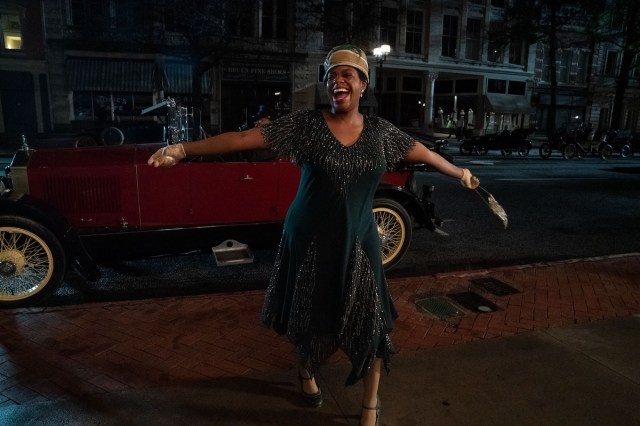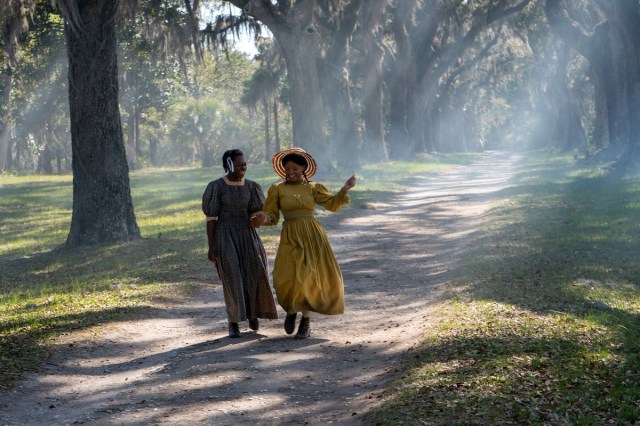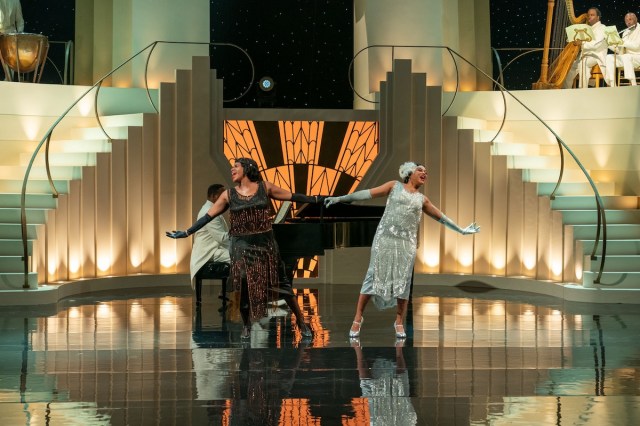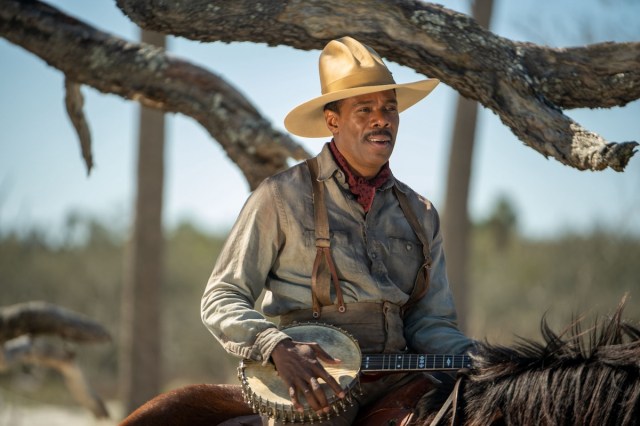Review: The Color Purple Returns to the Silver Screen, Singing
A new movie-musical adaptation of Alice Walker’s powerful novel hits theaters.

(© Eli Adé)
It has been 38 years since Steven Spielberg’s The Color Purple (based on Alice Walker’s Pulitzer Prize-winning novel) first hit theaters, and it remains one of my favorite movies. Since then, the stage musical adaptation has played Broadway twice: the 2005 premiere and John Doyle’s 2015 revival. The score (by Brenda Russell, Allee Willis, and Stephen Bray) is lush and emotionally evocative, and would have been justification enough to commit a new version of The Color Purple to celluloid. But the creators of The Color Purple, the new movie from Warner Bros., were not content to reproduce a stage musical on screen. The resulting film draws on the best elements of past iterations of The Color Purple for a new telling of this timeless story.
It’s about Celie (Phylicia Pearl Mpasi in the early scenes), a young Black woman growing up in rural Georgia in the early part of the 20th century. Her cruel father (Deon Cole) impregnates her twice and takes away her babies. Then he sells her off to be married to Mister (Colman Domingo), a local farmer and widower with three children. She becomes estranged from her beloved sister, Nettie (Halle Bailey), when Mister banishes her for rejecting his sexual advances (he was always more interested in Nettie). This leaves Celie (Fantasia Barrino later in the film) alone, trapped in a loveless marriage, and forced to raise someone else’s children.

It seems intractably dark, but screenwriter Marcus Gardley and director Blitz Bazawule carefully, almost imperceptibly let in the light over the course of two-and-a-half hours. We encounter Sophia (Danielle Brooks), the headstrong wife of Mister’s son, Harpo (Corey Hawkins), who urges Celie to stand up for herself. The arrival of Mister’s true love, the singer Shug Avery (Taraji P. Henson), seems to portend more heartache for Celie — but the complicated relationship between the two women allows Celie for the first time to contemplate her own desires. All the while, Nettie (played as an adult by Ciara) keeps writing, even though Mister hoards her letters telling Celie about her extraordinary life in Africa. She never gives up hope that they will one day be reunited.
It’s a beautiful story of growth and redemption, undergirded here by magnificent performances and soul-stirring song. Gardley and Bazawule have taken a bulldozer to the Broadway score, cutting 12 songs and adding several more. I particularly appreciated the incorporation of two songs from the 1985 film (“Miss Celie’s Blues” and “Maybe God Is Tryin’ to Tell You Somethin’”), both used differently and powerfully here.

(© Eli Adé)
The Color Purple is at its best when it invites us to the secret musical world inside Celie’s brain, like when a trip to the movies with Shug transforms into a lesbian MGM fantasy (this is the opulent black and white setting for “What About Love?”). Then there is the spinetingling setting for “She Be Mine” (a song that was cut from the Broadway show, but reincorporated here), that features young Celie walking past a chain gang sweating in the Georgia sun.
Bazawule, who has directed for Beyoncé, is able to condense so much through imagery, as when we watch Sophia pass an entire year in jail in one 360-degree panning shot (Dan Laustsen’s cinematography is breathtaking). Bazawule’s sweeping cinematic vision synthesizes the aesthetic of a modern music video with an old Busby Berkeley sensibility that is sure to make any lover of movie-musicals swoon.
Not everything works: The plot is slow to develop in the first half-hour, needlessly waylaid by the inclusion of a new song, “Keep It Movin’” by composing team Nova Way. The segment depicts Nettie and Celie going into town and admiring hats in the window; it is not nearly as effective at establishing their bond as a similar montage in the 1985 film in which Nettie teaches Celie to read — which makes the later plot about the letters even more resonant.
One of the difficulties of dramatizing a story like The Color Purple, drawn from a novel that spans 40 years, is the amount of physical and mental change that the characters undergo in that time. It’s a particular challenge for actors, and impressive when they pull it off, as they do here.

(© Eli Adé)
Domingo, who has emerged as one of the most dynamic actors working today, takes us through a huge journey as Mister — starting as a lovesick young man, curdling into a middle-aged tyrant, and, after hitting rock bottom, rebuilding himself in a way that may even surprise fans of the novel.
Brooks undergoes a similarly dramatic turn as Sophia, a woman way ahead of her time, whose fiery spirit is nearly extinguished by a society that refuses to tolerate strong Black women. The interactions between Brooks and Barrino are among the most moving in the film.
Barrino is a compelling emotional center of gravity for this film, allowing the audience to discover the world as Celie does. It’s wonderful that her vocal performances (which sound better than ever) are now preserved on film that wasn’t clandestinely recorded from the second balcony of the Broadway Theatre. But more importantly, her portrayal of Celie’s emotional journey has deepened over the last two decades. We can feel Celie’s despair, curiosity, rage, hope, and pure joy. It’s an emotional roller-coaster I would happily, weepily ride again and again.








